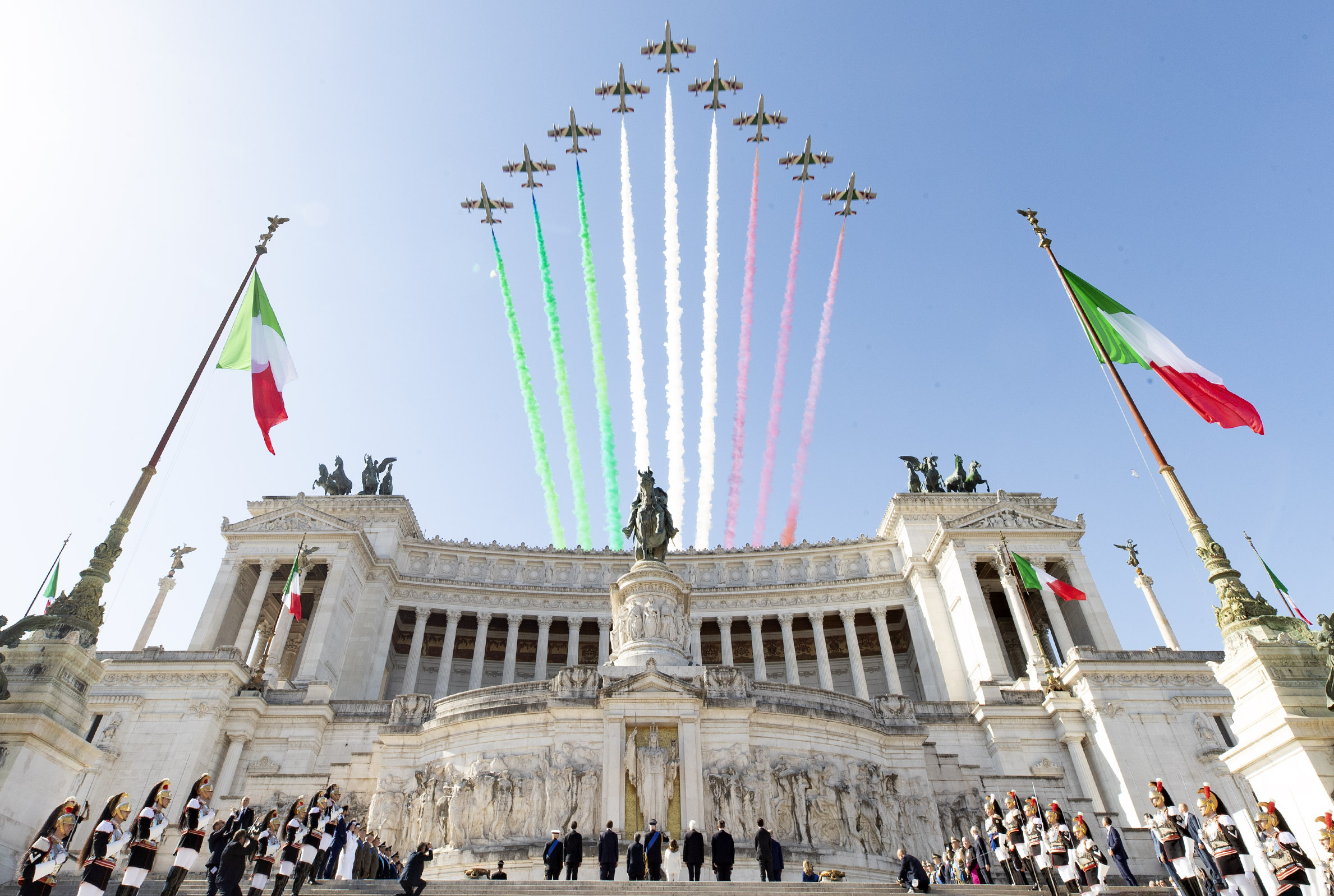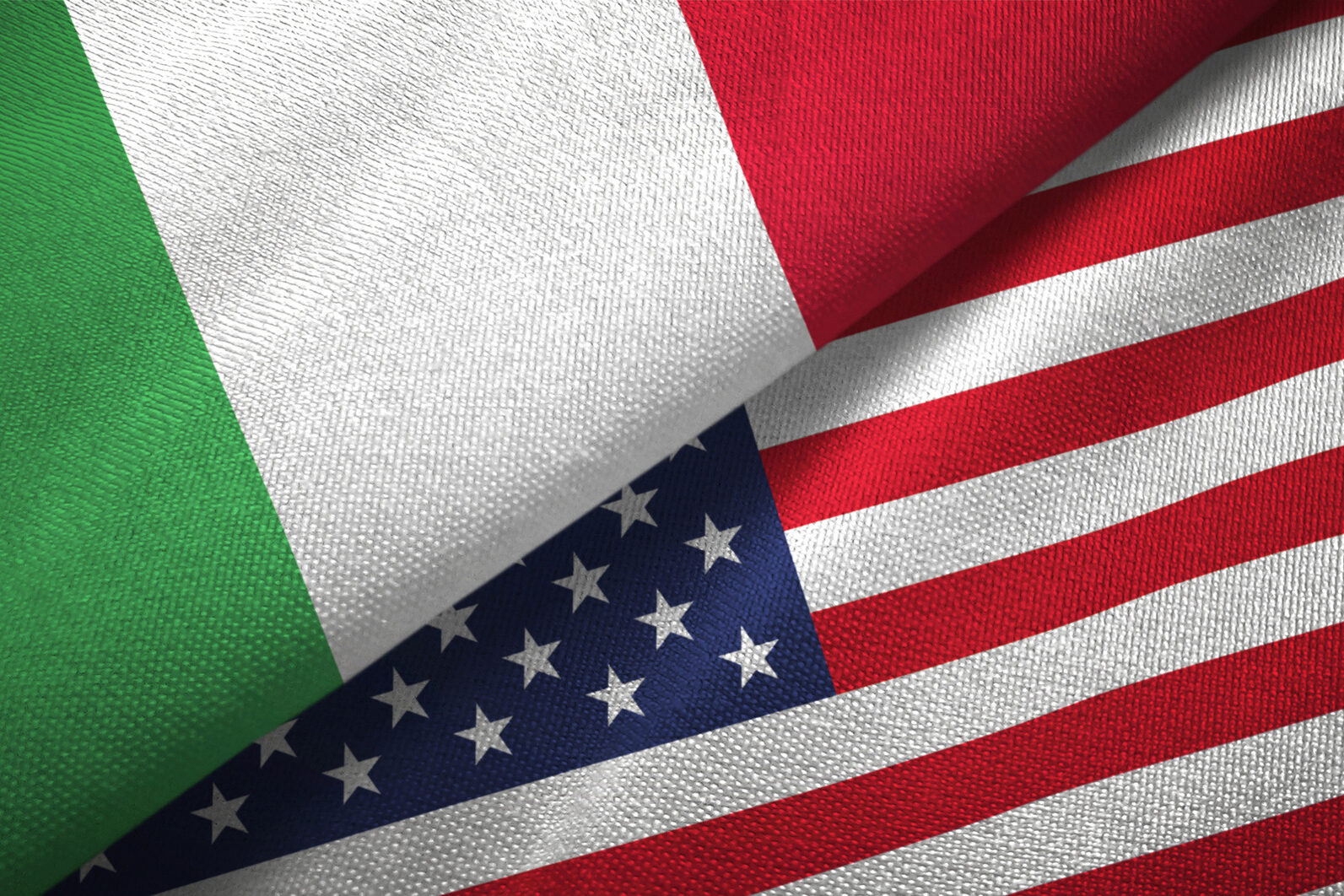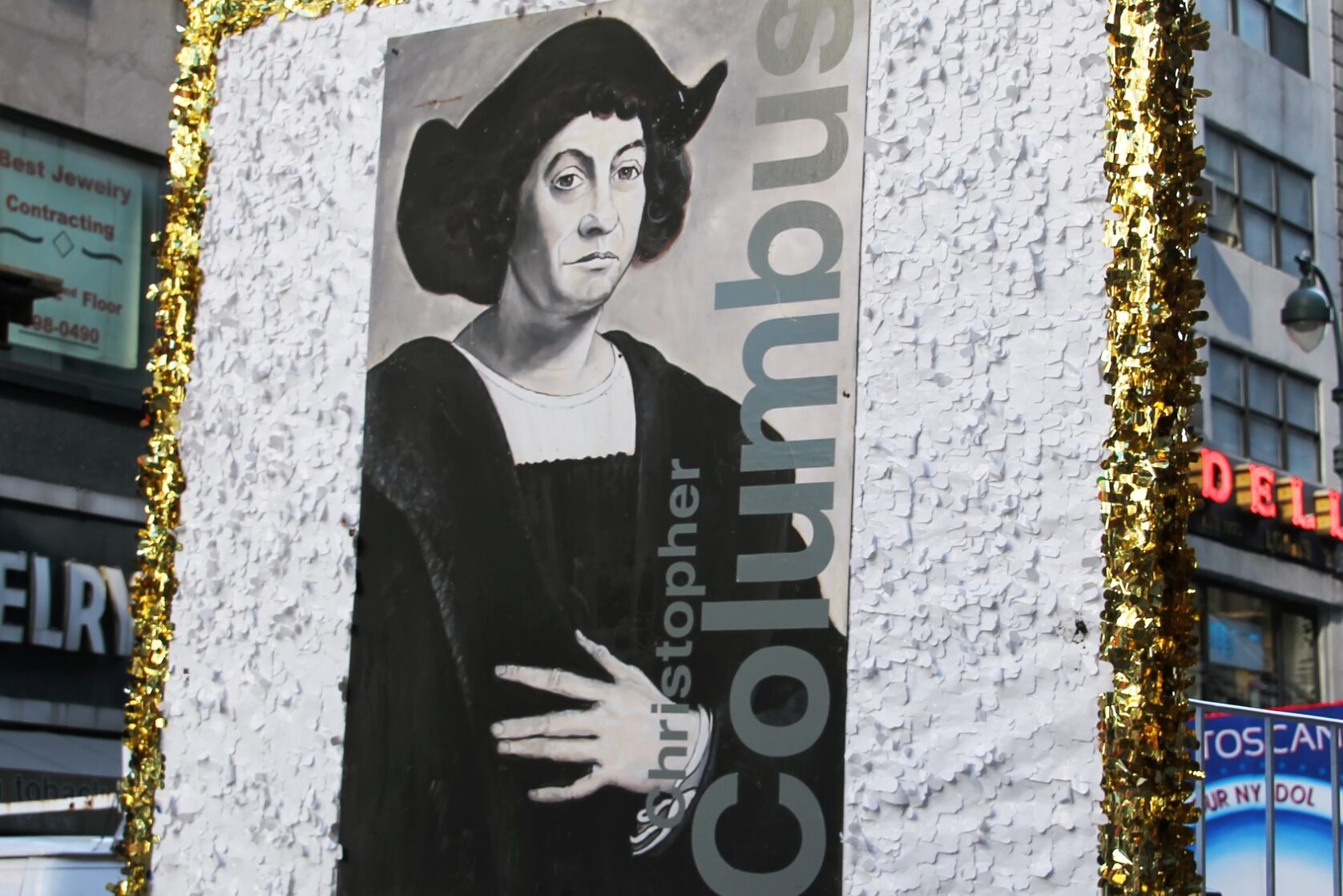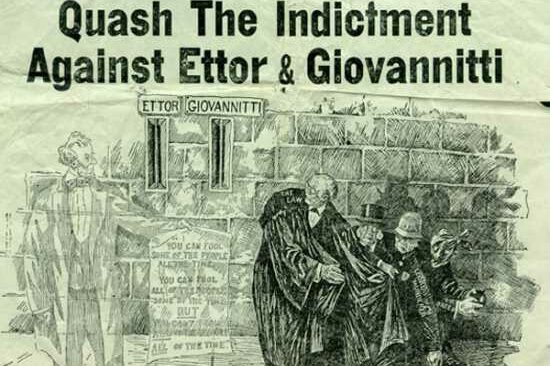Dear Readers,
Sunday, June 16th, is Father’s Day, so happy Father’s Day to all you fathers and grandfathers out there, and may happy memories bring a small measure of comfort to all readers whose fathers are gone now. Hopefully, they are with the angels.
**
June 2nd was the Festa della Repubblica Italiana, the national holiday to celebrate the birth of the Italian Republic. On June 2nd, 1946, the year following the end of World War II, the Italian Republic was proclaimed by public referendum, marking the end of the monarchy in Italy.
During the week, the Consul General of Italy usually hosts a party to celebrate Italian Republic Day, just as American consulate officials serving in various cities throughout the world host Independence Day celebrations on July 4th. Many Italian Americans do not realize that the Repubblica Italiana, a land of ancient anniversary, is only 78 years old, and if their parents or grandparents came to the US in the pre-World War II years, there was no Festa della Repubblica family celebration to remember, because there was no Festa before 1946.
**
On day one of the outbreak of the American Revolution (Spirit of 76 and Yankee Doodle Dandy), there were thousands of people living in the United States from geographic Italy, and hundreds of soldiers and sailors served who were of Italian ancestry. In New York State, a Fonda family had nearly 50 members who served during the Revolutionary War, and Lieutenant James Bracco was killed in action on October 28, 1776, in White Plains, New York.
In Pennsylvania, serving as a captain in the Continental Army was Christopher Baldi, later a Brigadier General, and also Colonel Lewis Nicola. In the South, the Taliaferro family had many members in military service: commander Richard Taliaferro was killed at the Battle of Guilford Hall in March of 1781. A cousin, Benjamin Taliaferro, served as a captain in the Rifle Corps, commanded by General Morgan. In 1619, at Jamestown, a certain Lieutenant Lupo was guarding the fort. In 1755, the captain of a Virginia regiment at Fort Duquesne was William Peyrone (Perone), serving along with George Washington — no Italian connection — and Colonel I. Corsa of New York State (the Bronx), who served until 1765.
**
During the Civil War, the proportion of officers and enlisted men of Italian lineage who served was the highest of any ethnic group in America. Six of them received the highest award in the nation, the Congregational Medal of Honor. More, at a later date, about the Civil War, Spanish-American War, and World War I. For now, fast forward to World War II, where, like African Americans in the Vietnam War, a disproportionate number of Italian-Americans were serving as potential cannon fodder. During the early days of wartime hysteria, when there was talk of interning Italians as well as Japanese-Americans, President Roosevelt was dissuaded from the idea when he was informed by military brass that over 10% of the men and women serving in the US Armed Forces were, in fact, of Italian descent.
Indeed, thousands of Italian-Americans died for their country in World War II: in Boston’s Little Italy’s “North End” alone, hundreds of black memorial signs were placed above regular street signs indicating a neighborhood song killed in action. Hundreds were awarded the Medal of Honor, the Navy Cross, the Distinguished Service Cross, and the Distinguished Service Medals. Thousands more were awarded the Purple Heart.
One recipient was John Basilone, whom General Douglas MacArthur described as a one-man army: honorable and brave Gunnery Sergeant John Basilone held up an entire Japanese regiment for three days and nights on Guadalcanal with his machine gun. Over and over again, the enemy stormed his position until, at last, Basilone had to move because the Japanese he had killed were piled to a height above which his machine gun could not fire. After this exploit and the awarding of the Medal of Honor, Basilone was returned to his hometown of Raritan, New Jersey, but he kept thinking of his comrades fighting and dying in the Pacific. He requested assignment to active duty and was killed in the landing of Iwo Jima. The Navy Cross was bestowed on Basilone posthumously and a navy destroyer was named in his honor. Basilone was the first American to receive the Medal of Honor during World War II and the only man in history to win the country’s two highest military honors.
Cari lettori,
Domenica 16 giugno è la festa del papà, quindi buona festa del papà a tutti voi padri e nonni là fuori, e possano i ricordi felici portare un po’ di conforto a tutti i lettori i cui padri non ci sono più. Si spera che siano con gli angeli.
**
Il 2 giugno è stata la Festa della Repubblica Italiana, la festa nazionale che celebra la nascita della Repubblica Italiana. Il 2 giugno 1946, l’anno successivo alla fine della Seconda Guerra Mondiale, con un referendum popolare venne proclamata la Repubblica Italiana, segnando la fine della monarchia in Italia.
Durante la settimana, il Console Generale d’Italia è solito organizzare una festa per celebrare la Festa della Repubblica Italiana, proprio come i funzionari del Consolato americano in servizio in varie città del mondo ospitano le celebrazioni del Giorno dell’Indipendenza il 4 luglio. Molti italoamericani non si rendono conto che la Repubblica Italiana, terra di antichi anniversari, ha solo 78 anni, e se i loro genitori o nonni sono arrivati negli Stati Uniti negli anni precedenti la Seconda Guerra Mondiale, non c’era nessuna Festa della Repubblica da ricordare, perché prima del 1946 non esisteva una Festa.
**
Il primo giorno dello scoppio della Rivoluzione Americana (Spirit of 76 e Yankee Doodle Dandy), c’erano migliaia di persone che vivevano negli Stati Uniti provenienti dall’Italia geografica e centinaia di soldati e di marinai di origine italiana prestavano servizio. Nello Stato di New York, una famiglia Fonda contava quasi 50 membri che prestarono servizio durante la guerra rivoluzionaria e il tenente James Bracco fu ucciso in azione il 28 ottobre 1776 a White Plains, New York.
In Pennsylvania, a servire come capitano nell’esercito continentale c’erano Christopher Baldi, in seguito generale di brigata, e anche il colonnello Lewis Nicola. Nel sud, la famiglia Taliaferro aveva molti membri in servizio militare: il comandante Richard Taliaferro fu ucciso nella battaglia di Guilford Hall nel marzo del 1781. Un cugino, Benjamin Taliaferro, prestò servizio come capitano nel Rifle Corps, comandato dal generale Morgan. Nel 1619, a Jamestown, un certo tenente Lupo era a guardia del forte. Nel 1755, il capitano di un reggimento della Virginia a Fort Duquesne era William Peyrone (Perone), che prestava servizio insieme a George Washington – nessun legame italiano – e al colonnello I. Corsa dello Stato di New York (Bronx), che prestò servizio fino al 1765.
**
Durante la Guerra Civile, la percentuale di ufficiali e arruolati di stirpe italiana che prestarono servizio fu la più alta di qualsiasi gruppo etnico in America. Sei di loro hanno ricevuto il riconoscimento più alto della nazione, la Medaglia d’Onore della Congregazione. Maggiori informazioni, in un secondo momento, sulla guerra civile, sulla guerra ispano-americana e sulla prima guerra mondiale. Per ora, andiamo avanti velocemente fino alla seconda guerra mondiale, in cui, come gli afroamericani nella guerra del Vietnam, un numero sproporzionato di italoamericani funsero da potenziale carne da cannone. Durante i primi giorni dell’isteria bellica, quando si parlava di internare sia italiani che giapponesi-americani, il presidente Roosevelt fu dissuaso dall’idea quando fu informato dai vertici militari che oltre il 10% degli uomini e delle donne in servizio nelle forze armate statunitensi erano, in realtà, di origine italiana.
In effetti, migliaia di italo-americani morirono per il loro Paese durante la seconda guerra mondiale: solo nel “North End” di Little Italy, a Boston, centinaia di cartelli commemorativi a lutto furono posti sopra i normali segnali stradali indicando la canzone di un vicino di casa ucciso in azione. Centinaia hanno ricevuto la medaglia d’onore, la croce della marina, la croce per il servizio distinto e le medaglie per il servizio distinto. Altre migliaia hanno ricevuto il Purple Heart.
Uno dei destinatari fu John Basilone, che il generale Douglas MacArthur descrisse come un esercito formato da un solo uomo: l’onorevole e coraggioso sergente d’artiglieria John Basilone trattenne un intero reggimento giapponese per tre giorni e tre notti a Guadalcanal con la sua mitragliatrice. Più e più volte, il nemico prese d’assalto la sua posizione finché, alla fine, Basilone dovette muoversi perché i giapponesi che aveva ucciso erano ammassati ad un’altezza oltre la quale la sua mitragliatrice non poteva sparare. Dopo questa impresa e l’assegnazione della Medaglia d’Onore, Basilone tornò nella sua città natale di Raritan, nel New Jersey, ma poiché continuava a pensare ai suoi compagni che combattevano e morivano nel Pacifico, chiese l’assegnazione al servizio attivo. Venne ucciso nello sbarco di Iwo Jima. La Croce della Marina fu conferita postuma a Basilone e in suo onore gli fu intitolato un cacciatorpediniere della Marina. Basilone fu il primo americano a ricevere la medaglia d’onore durante la seconda guerra mondiale e l’unico uomo nella storia a ottenere le due più alte onorificenze militari del Paese.
**































